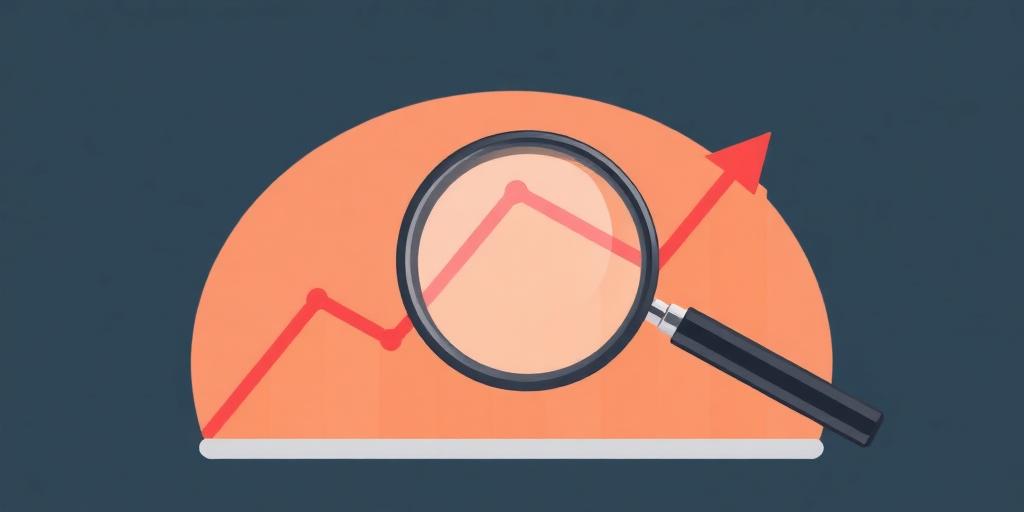Organic Traffic Tanking? A Step-by-Step Diagnostic Guide
Witnessing a drop in organic traffic can be alarming. It signifies a potential issue impacting your website's visibility in search engine results. Before you panic, systematically investigate the possible causes. This guide provides a structured approach to diagnosing and addressing declines in organic traffic.
1. Confirm and Quantify the Drop
- Analytics Check: Begin by verifying the traffic decrease in Google Analytics or your preferred analytics platform. Ensure accurate date ranges and compare data to previous periods (year-over-year, month-over-month).
- Segment Analysis: Don't just look at overall traffic. Segment your traffic by landing page, device (desktop vs. mobile), and geographic location to pinpoint specific areas experiencing the decline. Is it a sitewide issue, or isolated to certain sections? Tools like Google Search Console are invaluable here.
2. Rule Out External Factors
- Algorithm Updates: Google frequently updates its search algorithms. Major updates can significantly impact rankings. Check resources like Moz's Google Algorithm Update History (https://moz.com/google-algorithm-change) to see if a recent update aligns with the timing of your traffic drop.
- Seasonality: Consider seasonal trends. Do you sell products or services that experience fluctuations in demand based on time of year? Compare your traffic to the same period last year to account for seasonality.
- External Events: Significant news events or industry shifts can temporarily divert attention away from your website. Analyze whether any external factors could be contributing to the decline.
3. On-Page SEO Audit
- Keyword Rankings: Track your target keyword rankings using a tool like SEMrush, Ahrefs, or Rank Ranger. Has your website dropped in rankings for important keywords? If so, identify which keywords are affected.
- Content Quality: Review your website's content for quality, relevance, and accuracy. Is your content still providing value to users? Is it up-to-date? Consider refreshing or updating older content to improve its ranking potential.
- Technical SEO: Conduct a thorough technical SEO audit. Use tools like Screaming Frog or Sitebulb to identify crawl errors, broken links, slow page speed, and other technical issues that may be hindering your website's performance in search results. This is especially important for "website traffic analysis."
4. Off-Page SEO Assessment
- Backlink Profile: Analyze your backlink profile for toxic or low-quality links. Disavow any harmful backlinks using Google Search Console's Disavow Tool. Aim to acquire high-quality backlinks from authoritative websites in your industry to bolster your site's credibility.
- Brand Mentions: Monitor brand mentions online. Are people talking about your brand? Are they linking back to your website? Positive brand mentions can indirectly influence search rankings.
5. Competitive Analysis
- Competitor Activity: Analyze your competitors' strategies. Have they launched new content initiatives or implemented SEO tactics that could be impacting your rankings? Use tools like SEMrush or Ahrefs to monitor their keyword rankings, backlinks, and content strategy. Are they ranking for "best website checker" when you aren't?
- SERP Landscape: Examine the search engine results page (SERP) for your target keywords. Are there new types of search results (featured snippets, knowledge panels, local packs) that are pushing organic results further down the page? Optimize your content to compete for these prominent SERP features.
6. Potential Penalties
- Manual Penalties: Check Google Search Console for any manual penalties. Manual penalties are issued when Google detects violations of its webmaster guidelines. If you have a manual penalty, address the issue and submit a reconsideration request.
- Algorithmic Penalties: Algorithmic penalties are more difficult to detect. They are often the result of algorithm updates that penalize websites for specific SEO tactics (e.g., keyword stuffing, link schemes). Research recent algorithm updates to see if your website may have been affected.
7. Mobile-First Indexing
- Mobile Friendliness: Ensure your website is mobile-friendly. With Google's mobile-first indexing, your website's mobile version is used for indexing and ranking. Use Google's Mobile-Friendly Test to check your website's mobile usability.
- Page Speed: Optimize your website's page speed, especially on mobile devices. Slow page speed can negatively impact user experience and search rankings. Use Google's PageSpeed Insights to identify and address page speed issues.
8. Indexing Issues
- Robots.txt: Verify that your robots.txt file is not blocking search engine crawlers from accessing important pages on your website. An improperly configured robots.txt file can prevent your website from being indexed.
- Sitemap: Submit a sitemap to Google Search Console to help Google discover and index your website's pages. Ensure your sitemap is up-to-date and contains all important pages.
9. Content Decay
- Content Freshness: Search engines favor fresh, up-to-date content. Regularly review and update your existing content to keep it relevant and engaging. Consider adding new information, statistics, or examples to refresh older content.
- Broken Links: Repair any broken links on your website. Broken links can negatively impact user experience and search rankings. Use a broken link checker to identify and fix broken links.
10. Implementation and Monitoring
- Prioritize Fixes: Based on your analysis, prioritize the most critical issues and develop a plan to address them. Start with the issues that are likely to have the biggest impact on organic traffic.
- Track Progress: Monitor your progress as you implement fixes. Use Google Analytics and Google Search Console to track your website's organic traffic, keyword rankings, and other key metrics. This monitoring is key for "checking website traffic."
- Stay Informed: Stay up-to-date on the latest SEO best practices and algorithm updates. The SEO landscape is constantly evolving, so it's important to stay informed to maintain your website's visibility in search results.
By following this structured approach, you can effectively diagnose and address declines in organic traffic, and get your website back on track to achieving its SEO goals.









